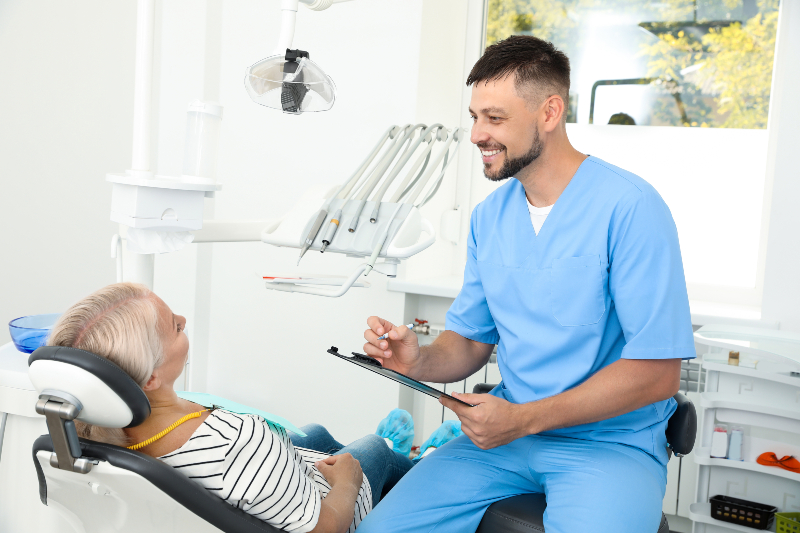Gingivitis is a periodontal disease that is characterized by the inflammation of the gums. Family dentistry practices are well equipped to deal with cases of gingivitis, but it is very important that patients who believe they are suffering from a case of gingivitis to schedule an appointment with their dentists as soon as possible. Here you will find a guide to symptoms of gingivitis, as well as a breakdown of how the disease is normally treated.
Symptoms of gingivitis
If you are experiencing red and puffy gums that bleed easily when you brush your teeth, this could be a sign of a developing case of gingivitis. Mild cases of gingivitis can often go away on their own with frequent healthy brushing and flossing habits, so if you believe you have a mild case of gingivitis, try brushing more frequently and for longer periods, and working more flossing into your routine.
Incorporating an antiseptic mouthwash is also a good way to try to rid your mouth and gums of mild gingivitis symptoms.
More severe gingivitis symptoms can include bright purple or red gums that are tender to the touch, halitosis or bad breath, and receding or soft gums.
Types of gingivitis
There are two main types of gingivitis or gingival disease normally found in patients’ mouths. The first of the two is dental plaque-induced gingival disease, which can be caused by plaque, specific medications, malnutrition, or other systemic factors.
Non-plaque-induced gingival lesions are the second most common type of gingival disease. These lesions are often caused by a specific fungus, bacterium, or virus. Other causes of these lesions could be a genetic predisposition, allergic reactions, certain illnesses, or reactions to foreign bodies in the oral area such as dentures.
It is also possible for these non-plaque-induced lesions to have no evident cause.
Causes of gingivitis
By far the most common cause of gingivitis is an accumulation of plaque on the teeth and around the gums. The presence of this plaque triggers a response from the immune system, which if left unchecked, can lead to the destruction of gingival, or gum, tissue.
Dental plaque is a substance made up of a biofilm, and it naturally accumulates on teeth. It is usually made up of groups of bacteria that adhere to the surface of a tooth.
In small amounts, plaque can actually protect the mouth from interference from harmful microorganisms, but an excess of plaque can lead to tooth decay, gingivitis, and periodontitis.
If plaque is not removed regularly through brushing and flossing, it can harden into calculus, also called tartar. This yellow tartar is located near the gums at the base of teeth and can make the gums more prone to bleeding. Due to the adhesive nature of the tartar, only a dental professional can safely remove this buildup during an appointment.
Other risk factors that could potentially cause or increase the risk of gingivitis are a sudden change in hormone levels (which can occur during puberty, menopause, during menstrual cycles, and pregnancy); diseases such as cancer, diabetes, and HIV; medications that reduce saliva production or can cause abnormal gum tissue growth; smoking cigarettes regularly; a poor diet low in Vitamin C; and increased age.
Treatment options

If you need to seek treatment from a dental professional for your gingivitis, your dentist will most likely remove your plaque and tartar and educate you on how best to keep plaque from building up in your mouth at home by implementing a regular and thorough brushing and flossing routine.
After this first treatment, additional follow-up visits may be needed if the case is very severe or your symptoms do not disappear after a certain amount of time.
When treating yourself at home either for mild gingivitis or after dental gingivitis treatment, make sure to brush your teeth at least twice a day, ideally with an electric toothbrush. Floss at least once a day, and regularly rinse out your mouth with an antiseptic mouthwash. If you need any treatment recommendations, speak to a dental professional.



